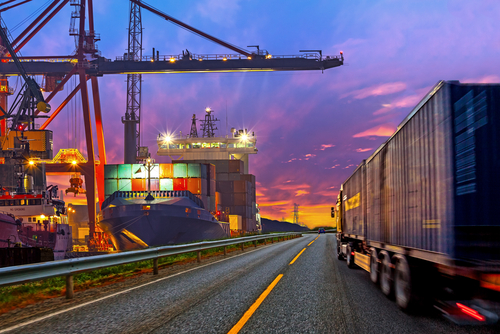
When you are trying to estimate the time and cost it takes for you to ship your freight to your customers, several factors can impact the bottom line. Size, weight, modes, distance and even the time of year can affect the timeliness and price of getting your cargo to its final destination.
Luckily, there are some steps you can take to help keep your shipping prices affordable and plan for obstacles that may delay your shipment. Here are some factors to keep in mind when you are planning to ship your freight.
Order the Right Packaging Materials for Shipping to Protect Your Goods and Products During Delivery
1. Shipment Size & Weight
If you’re wondering “How much is freight shipping?,” it all begins with size and weight. These are some of the most significant determiners of your shipment’s price. Freight is charged based on its size and weight, with larger and heavier loads costing more.
Determining the exact size and weight can be tricky because modes of shipping calculate these factors differently. For instance, air freight may be calculated based on actual weight. In contrast, cargo shipped by ocean typically calculates the cost by dimensional weight or the total volume of goods in your shipment.
This is where packing materials for shipping are essential in estimating and saving costs. Because of dimensional weight considerations, smaller or lighter goods packed in large containers can end up costing you more. Choosing appropriate packaging for your shipment size is an excellent way to get around this.
2. Shipping Modes

When shipping your goods, considering how they arrive at their destination is integral. Different modes vary significantly in costs and delivery time frames. The most common methods of shipping are truck, ocean, air and rail.
Check Out Our Available Shipping Barrels for Sale
Shipping freight by truck is one of the most flexible, affordable and efficient options, provided your shipment is domestic. Truck shipping allows for more significant savings on shipment sizes since different weight classes mean you pay only for the truck space you need.
Air freight generally decreases transit time while increasing costs and is limited by weight and cargo type restrictions, such as hazardous materials. Ocean freight usually has the opposite effect, decreasing costs while increasing transit time, with the benefit of being able to transport larger and more diverse cargo.
Rail is most often used in intermodal freight, which involves more than one shipping mode, such as rails and trucks’ cooperation to deliver the same shipment. Intermodal shipping usually results in decreased package handling, which can increase efficiency and reduce costs.
Available shipping modes may also change depending on your cargo type. For example, hazardous materials have special needs that require you to find appropriate shipping barrels for sale that allow for safe transit, and many are not permitted to be shipped by air.
3. Distance
Your shipment’s start- and endpoints can have significant effects on shipping time and cost. Generally, the greater the distance between the origin and destination, the more costly the trip.
Other factors, such as if the destination is near a major city center, can also influence time and cost. Whether your shipment is domestic or international can also impact which modes are available to you.
For international shipping, tariffs, restricted items and other aspects, such as the risk of shipment damage, can further increase costs.
4. Seasonality

If you’ve calculated your shipment’s size and weight and decided on an efficient shipping mode for your distance, it’s still a good idea to consider the time of year you’ll be shipping your goods.
Seasonality refers to both seasonal shipping trends and adverse conditions, such as weather. For example, shipping demand and prices typically increase during the end-of-year holiday season, and traveling through hurricane zones during hurricane season can cause delays, cancellations and possibly damage.
COVID-19 is an excellent example of this seasonality. Because of the pandemic, air shipping rates have risen while ocean shipping rates have declined. This has made shipping by ocean more desirable and has paved the way for expedited ocean freight options. Research shows how ocean freight shipping lines can maximize satisfaction.
On the other hand, COVID-19 has also caused severe delays at ports worldwide as a reduced workforce and increased precautions result in backlogs and reduced capacity. Shippers should expect these trends to continue until at least 2021.
Bonus Cost-Saver
It’s a good idea to pay attention to accessorial fees. These are fees for extra services, such as providing ramps to unload cargo and performing additional wrapping and packing. Many of these fees vary by industry and provider.
Final Thoughts
Familiarizing yourself with the components of shipping, along with current shipping trends, can help you decide on the best options for you. For more information on how Air Sea Containers can help lower your shipping costs with efficient packaging options, call us at (866) 596-9448.
Image Credits
Source: Nightman1965/Shutterstock.com
Source: Aleksandr Lupin/Shutterstock.com
Source: Travel Mania/Shutterstock.com
[ad_2]
Source link


